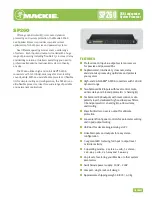
Clock: An internal clock generated by the on-chip baud rate generator or an external clock input
from the SCK pin can be selected as the SCI transmit/receive clock. The clock source is selected
by the C/
A
bit in SMR and bits CKE1 and CKE0 in SCR. See table 13-9.
When an external clock is input at the SCK pin, it must have a frequency equal to 16 times the
desired bit rate.
When the SCI operates on an internal clock, it can output a clock signal at the SCK pin. The
frequency of this output clock is equal to the bit rate. The phase is aligned as in figure 13-3 so that
the rising edge of the clock occurs at the center of each transmit data bit.
Figure 13-3 Phase Relationship between Output Clock and Serial Data
(Asynchronous Mode)
Transmitting and Receiving Data
SCI Initialization (Asynchronous Mode): Before transmitting or receiving, clear the TE and RE
bits to 0 in SCR, then initialize the SCI as follows.
When changing the communication mode or format, always clear the TE and RE bits to 0 before
following the procedure given below. Clearing TE to 0 sets the TDRE flag to 1 and initializes
TSR. Clearing RE to 0, however, does not initialize the RDRF, PER, FER, and ORER flags and
RDR, which retain their previous contents.
When an external clock is used, the clock should not be stopped during initialization or
subsequent operation. SCI operation becomes unreliable if the clock is stopped.
Figure 13-4 is a sample flowchart for initializing the SCI.
0
D0
D1
D2
D3
D4
D5
D6
D7
0/1
1
1
1 frame
468
www.DataSheet4U.com
















































